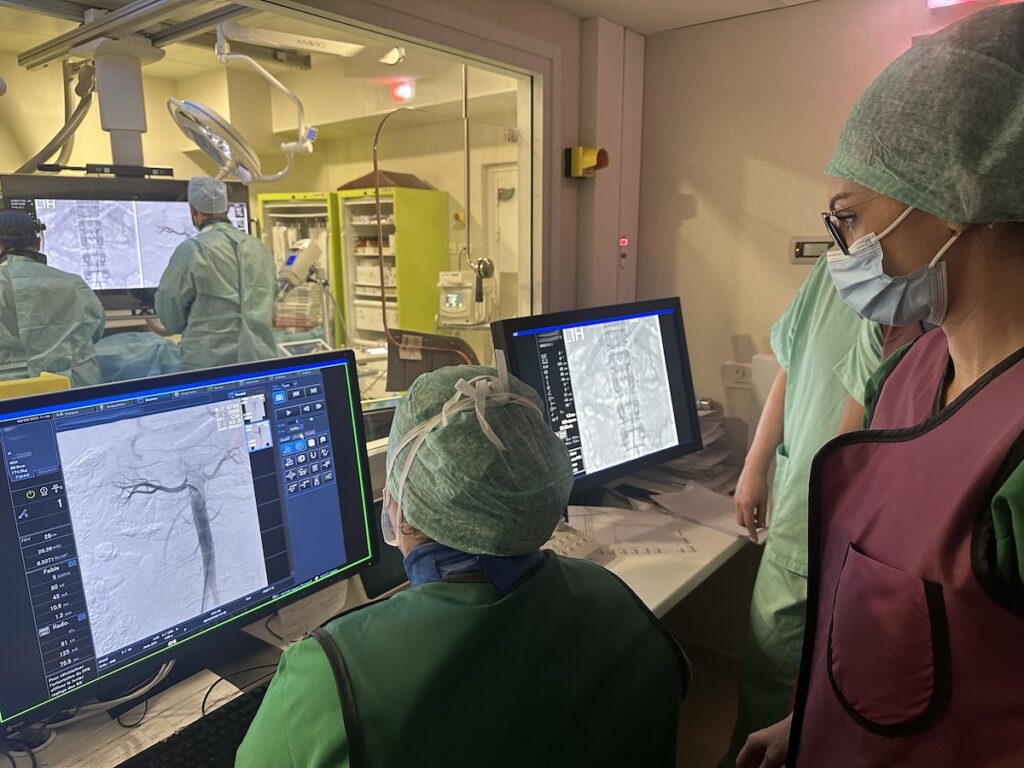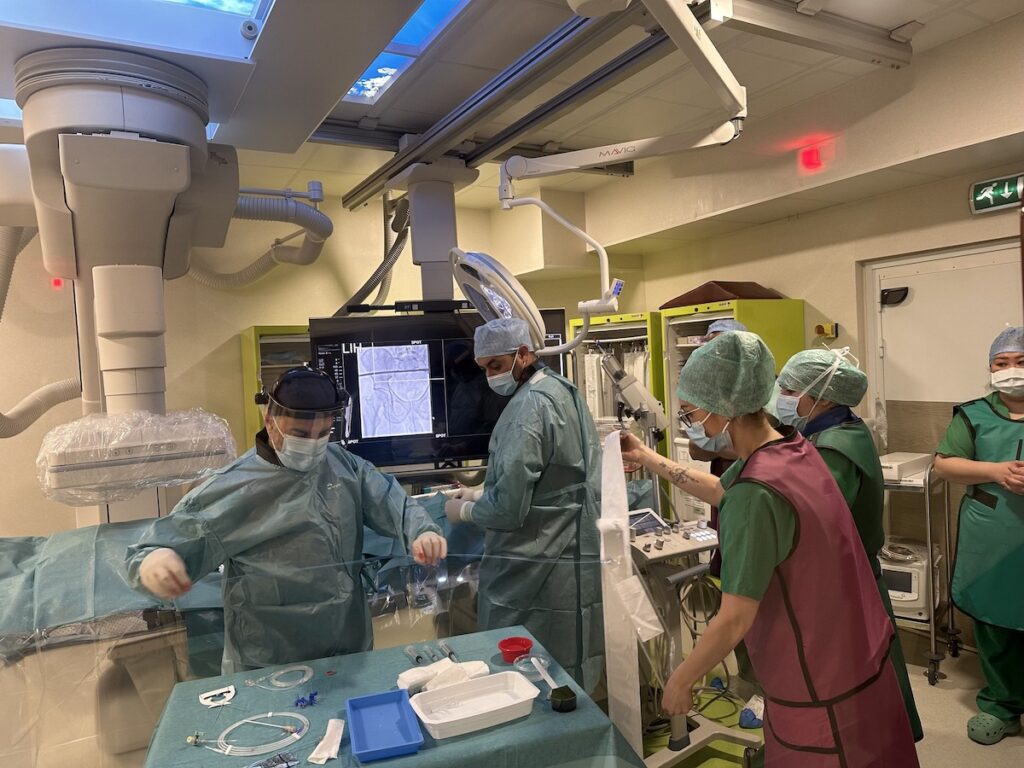CHPG: “revolutionary” new approach to treat hypertension

Ultrasound renal denervation is performed under general anaesthetic and takes around thirty minutes.
It affects one in three adults in France*, i.e. 17 million people… While hypertension – high blood pressure – may seem to be a harmless condition, it can lead to serious, sometimes fatal complications. It is the leading cause of stroke and of dementia, the second leading cause of heart attacks and the second highest contributing factor to heart failure. Painless and without any particular symptoms, it is only detected in half of all cases, hence its reputation as a “silent killer”.
‘Normal’ blood pressure should not exceed 140/90 mmHg, and you can measure it yourself using a blood pressure monitor (on the arm or wrist), which can be bought in chemists’ or certain supermarkets for a few dozen euros. The home test is also recommended by healthcare professionals as it avoids “white coat syndrome” – anxiety and therefore a rise in blood pressure – experienced by some on a visit to the doctor’s surgery. You can find the list of approved devices on Stridebp.org, which will be available soon in French.
Kidneys are the key
Until now, the CHPG has had two solutions for treating patients who suffer from hypertension: advocating lifestyle changes (eating less salt, losing weight, exercising, stopping smoking), or treatment through drugs. But in the last fortnight or so, a third option has been introduced: renal denervation using interventional radiology ultrasound.

The procedure requires two nights in hospital – © CHPG
For those of us who didn’t go to medical school, here’s a simple explanation from Professor Atul Pathak, who is also President of the French Hypertension Society: “when you have high blood pressure, the SNS (sympathetic nervous system) is put under stress. It is present throughout the body, including in nerve fibres around the arteries that lead to the kidneys and communicate with the brain.”
Renal denervation involves destroying these small electrical wires around the artery of the kidney, which are thought to be responsible for high blood pressure. “To access the renal artery, we put a small wire up through the femoral artery in the groin. On the end of it is a device that emits ultrasound, which destroys the nerve fibres. It’s a real revolution,” says the specialist.
A first procedure on 8 March
On 8 March 2024, Professor Atul Pathak’s cardiology team and Professor Giuseppe Guzzardi’s interventional radiology team achieved a major first, treating two hypertensive patients for whom drug treatments had been unsuccessful, using this “very safe” method, which was first developed in Australia in 2009 by an American start-up. “It’s a technique that makes it possible to reduce blood pressure while avoiding too many drugs or ones that may have undesirable side-effects,” says the head of the cardiology department at the CHPG, while not ruling out the possibility that there will be “non-responders”, patients who will not improve after the innovative therapeutic procedure.
Women are particularly at risk of hypertension, as a result of the contraceptive pill, pregnancy or the menopause.
The Monegasque hospital currently has the capacity to treat 25 patients, but the number is set to increase rapidly. “I think we should be able to reach 100 this year,” says Professor Atul Pathak. The CHPG is the only facility to offer this technology within a radius stretching from Genoa in Italy to Perpignan.
* According to Santé Publique France figures in 2023.








